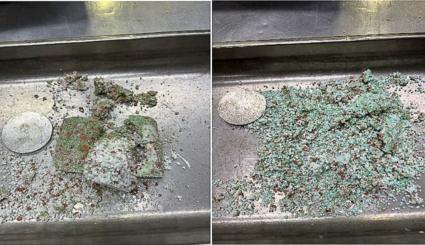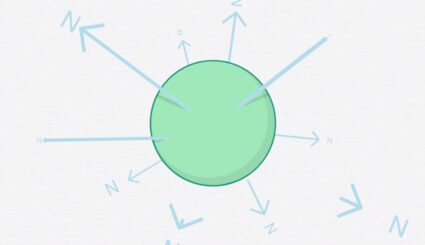Mississippi Crop Situation Podcast With Mike Howell

Nutrien Senior Agronomist Mike Howell recently joined crop doctors Tom and Jason on the Mississippi Crop Situation Podcast to talk about ESN Smart Nitrogen for Mississippi growers, nitrogen prices and Nutrien’s latest product Smart Nutrition™ MAP+MST®. Listen to the episode or read the transcript below.
Jason: What does Nutrien have to offer growers in Mississippi?
Mike: One of our big products that we’ve spent a lot of time working on, Mississippi state has helped a lot with this in the past, is our ESN product, that’s a polymer-coated nitrogen source that’s going to protect your nitrogen from all three forms of nitrogen loss for a period of 60-70 days out in the field.
Tom: Obviously, the listeners will be most concerned about the fact that fertilizer prices are on the rise. So at this point, what can you tell us about the price of ESN? Is that also going to be increasing or is that going to remain the same so that our listeners know that fertilizer prices may be increasing but the products that Nutrien has to offer are not increasing in suit at the same time?
Mike: Yeah, fertilizer prices are definitely on the rise, I think the last I saw urea was about $1,000/ton at New Orleans, that’s about three to four times what it was this time last year. We have to protect this nitrogen, especially urea, and there’s a lot of different ways that a grower can choose to do that. With the pandemic going on, transportation costs have gotten a lot higher, manufacturing inputs have gotten a lot higher, just about all the other protection products that are on the market have announced a price increase of 10-15 percent over the last couple of months. ESN is not increasing the price per say, we’re still selling ESN for the same premium over urea that we always have. The urea price is still going up, there’s nothing we can do about that, but the cost difference between urea and ESN is remaining the same. Basically, what that’s saying is you’re buying insurance for a Cadillac for the same price you could for a beat-up Chevrolet. We’re just protecting that nitrogen for a longer period of time for the same money we always have.
Jason: Describe a couple of the use patterns for ESN, how can we use it?
Mike: Corn and cotton in the Mississippi Delta, ESN works really well. Some growers have tried using ESN as a one-and-done type nitrogen product, they’ll put it out at planting and be able to take that nitrogen all the way throughout the season. That’s not the best way that I like to use it, for certain growers that works great—if you’ve got a lot of acres, 100 acres that’s 20 miles away and hard to get to when it comes side dress time, by all means this will work and save you that 20-mile trip to put out nitrogen later on in the year. The way I like to do it is put out a little bit of starter nitrogen on your corn or cotton when you’re planting, and most of these crops don’t need nitrogen until it starts getting closer to that reproductive stage. So, when it’s time to side dress, we’ll come out and put a big slug of ESN. We like to do a blend of ESN with urea or ammonium sulfate. Either one of those is going to get you some readily available nitrogen, so the plant’s never hurting for nitrogen, but the ESN is going to control that release of nitrogen for about 60 days at that time of year, feed that plant through the growing season, and that’s when it needs it the most, when it goes into that reproductive stage, whether we’re talking corn or cotton.
Jason: So two prills—one releases, and one doesn’t… is it different thicknesses of the coating or how does the time release mechanism work?
Mike: A lot of people think it’s a catastrophic release, they’re used to the old sulfur-coated technology, it all goes at one time. ESN is different. Each prill will release at a little different time and it’s done that way on purpose. On average it’s going to take 60-70 days in our part of the world for it to release. The way it works, water actually goes into the permeable membrane, it dissolves the urea inside that coating, then when the temperatures warm up and the crops are actively growing really good, it’s going to release a little bit of that nitrogen every day. The warmer it gets, the more nitrogen it releases. This time of year, we’ve got a lot of people putting it out on ryegrass and pastures. It works really good on a warm day like yesterday, it’ll release some nitrogen, let the ryegrass take it up. We get a cold day like we’ve got today, it closes those pores up and doesn’t let as much nitrogen out. It’s protecting it and letting the plant get it when it needs it.
Tom: What about new products? Earlier you mentioned something about a new sulfur product Nutrien offers?
Mike: We do have a new product that we’re working on, it’s called [Smart Nutrition] MAP+MST. Basically, all it is is good old-fashioned MAP, and we’re impregnating what we’re calling MST. That stands for Micronized Sulfur Technology. So, its elemental sulfur that’s really ground up finely so it can break down over the period of a month or two months in the field. It’s going to be kind of a controlled release sulfur product. We’re looking at this as a new way to get sulfur out to the crops. We’ve done some work at Stoneville with it a couple years ago, Bobby Golden looked at it one year and we did some work at Verona at it this year. Justin McCoy had a good look at it this year, we’re hoping to extend that research again next year and let some more people get a look at that. But it has really promising results in the first couple years.


